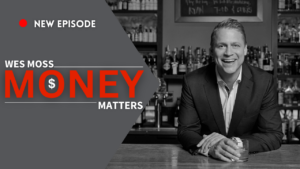When I read the headline in today’s Wall Street Journal that read “Stocks Regain Broad Appeal: Mom and-Pop Investors are Back, but Some Say That Could be Cause for Concern,” I was ready to write an analytical piece that looked at money flows to see if they had overreached on their conclusions. After reading the article in its entirety, I found that it was a perfect case study into the effects of investor psychology on investment decisions. (Read article here https://bit.ly/WSJInvestorPsychology).
The markets are up 26% within the S&P 500 and 23% on the Dow for the year. These returns year-to-date follow double digit returns for three of the past four years and a market that is up nearly 150% since the market bottom on March 9, 2009.
Just now we are seeing “Mom-and-Pop” investors get back into the markets? Within the article, one of the “Mom-and-Pop” investors that was interviewed mentioned how from 2009 to now they wanted to be very conservative (bonds and cash only); but now they wanted to get more aggressive. This is what really gets me, the same individual goes on and talks about how there might be a small correction every now and then but markets “ALWAYS” seem to spring back up.
This particular individual is 45 years old and is now wanting to get back into the markets, 4.5 years after the sharpest drop and a nearly 150% run-up. Individuals with this mindset have already made their mistakes and unfortunately at the sight of another minor correction will likely fall back into the mentality they had post-2008.
Investors tend to become more comfortable with investing after strong rallies, which is understandable and the norm for our investor psyche. Someone so young who has been sitting in investments appropriate for retirees has missed out on a great opportunity to position their retirement. If they truly have a devoted mentality (one that doesn’t waver) that markets “always” spring back, then they wouldn’t have been in bonds and cash for the past 4.5 years.
Another interviewee mentioned that they are now more comfortable with stocks even though they realize that valuations have become more rich lately, and one reason they feel more comfortable was “because the Twitter IPO went off [without a glitch].”
Do investors understand that Twitter was one IPO of many that have occurred this year? Actually in October, we saw nearly $30 billion in IPOs and all went off without a glitch, and the follow up questions I would have on this would be: What would a poor IPO mean for longer investment returns for a diversified portfolio or economic growth or other companies’ abilities to earn profits or a company’s desire to hire or a possible conflict in the Middle East or the prospects of energy independence in the U.S.? An IPO doesn’t impact longer term investment returns, the other aspects do and that is what should drive investment decisions not whether one tech IPO came to market smoothly or not.
I believe that the moral of this story is that the media has caused investors to have their investment decisions driven by headlines rather than individual goals and objectives.
The media doesn’t have a middle ground; they either push really negative stories (i.e., the market will fall forever) because negativity sells or it is the complete other end of the spectrum (i.e., the market will go higher forever). The ability for investors to have so much access to media and the inability of this media to be objective has caused this inability for retail investors to see through the noise.
I don’t believe that retail investors are too late to this game, because the markets have a ways to run, longer term. What I do fear is that they are too hot and cold and thus will end up being burned in the longer term.
What they don’t tend to understand is that although markets will continue, over the long run, to move higher, investors that miss the best days within the market can set themselves back pretty drastically.
An internal study we did showed that missing just a few of the best days during a longer term rally can cause returns to be 50% (absolute basis) less than buy and hold. The majority of the best days tend to happen right after some of the worst periods of time in the markets.
So, what do we suggest? Diversify from the beginning; buy ETFs that track different sectors and then buy stocks within different business lines. Then get different income oriented investments to help during periods of market stress. Keep this allocation, with minor tweaking through thick and thin. If you are looking at retirement and it looks 15-20 years or more out into the horizon, don’t let the headlines dictate your strategy. Stay invested as time is on your side. Determine your goals and objectives today and stick with them.








